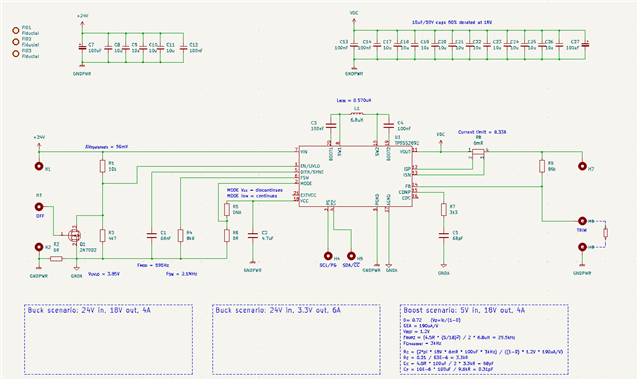Other Parts Discussed in Thread: , LM5177, LM5176
Hello Engineers,
I'm designing a dc/dc converter around the TPS55289 (and TPS552892) and have calculated the loop compensation components for a 5->18V 4A boost converter.
This design will also be used as a buck converter (24->3.3V 5A) and I would like to know how it behaves in this situation. Do I need to change the loop compensation circuit for buck operation? I'd like to run the converter at 2100KHz to reduce the output ripple as much as possible, does the junction temperature stay below maximum at 2.1MHz?
The 6.8uH, 4.1mR, 22A Wurth 7443556680 will be used as the inductor.



